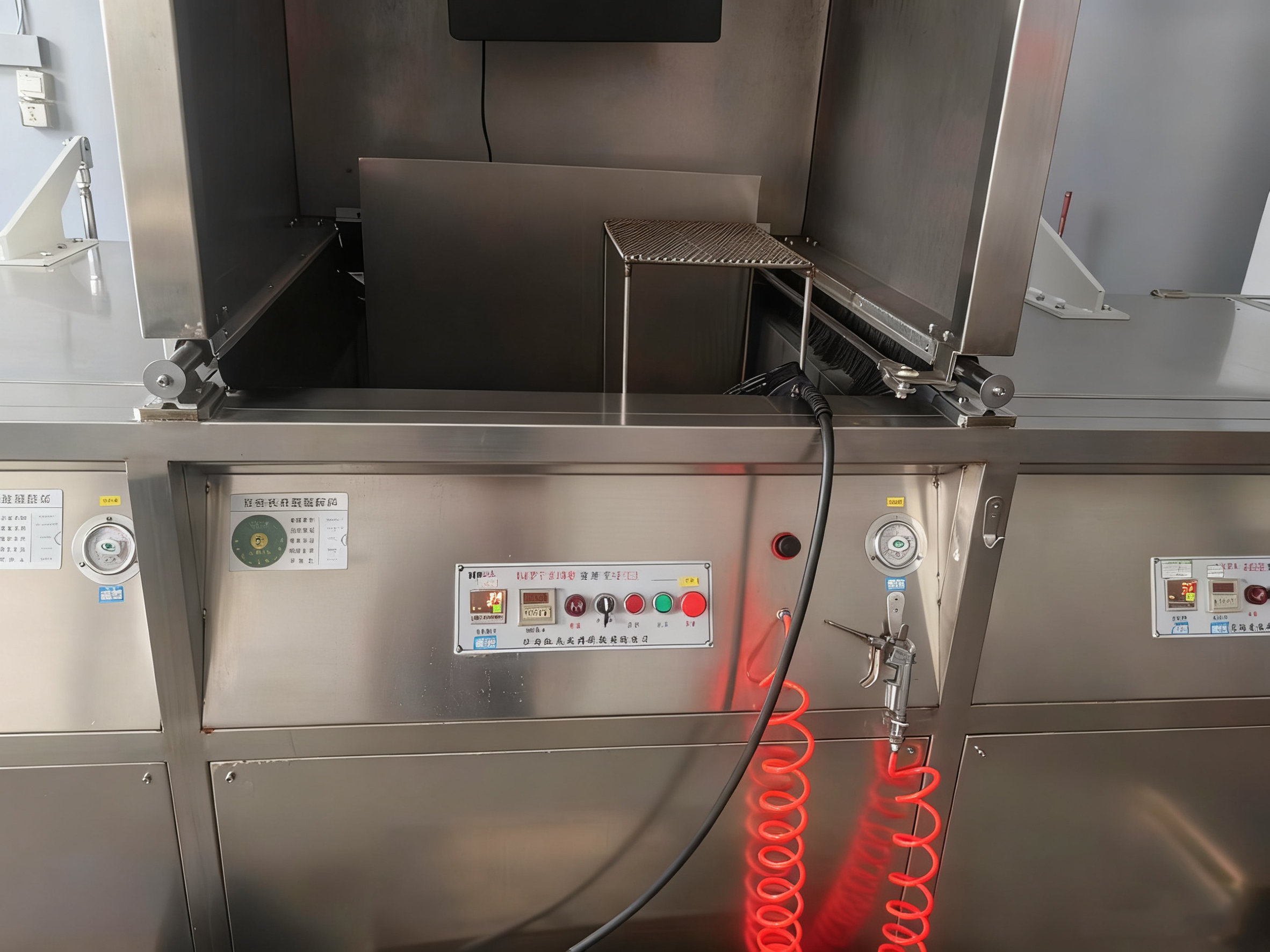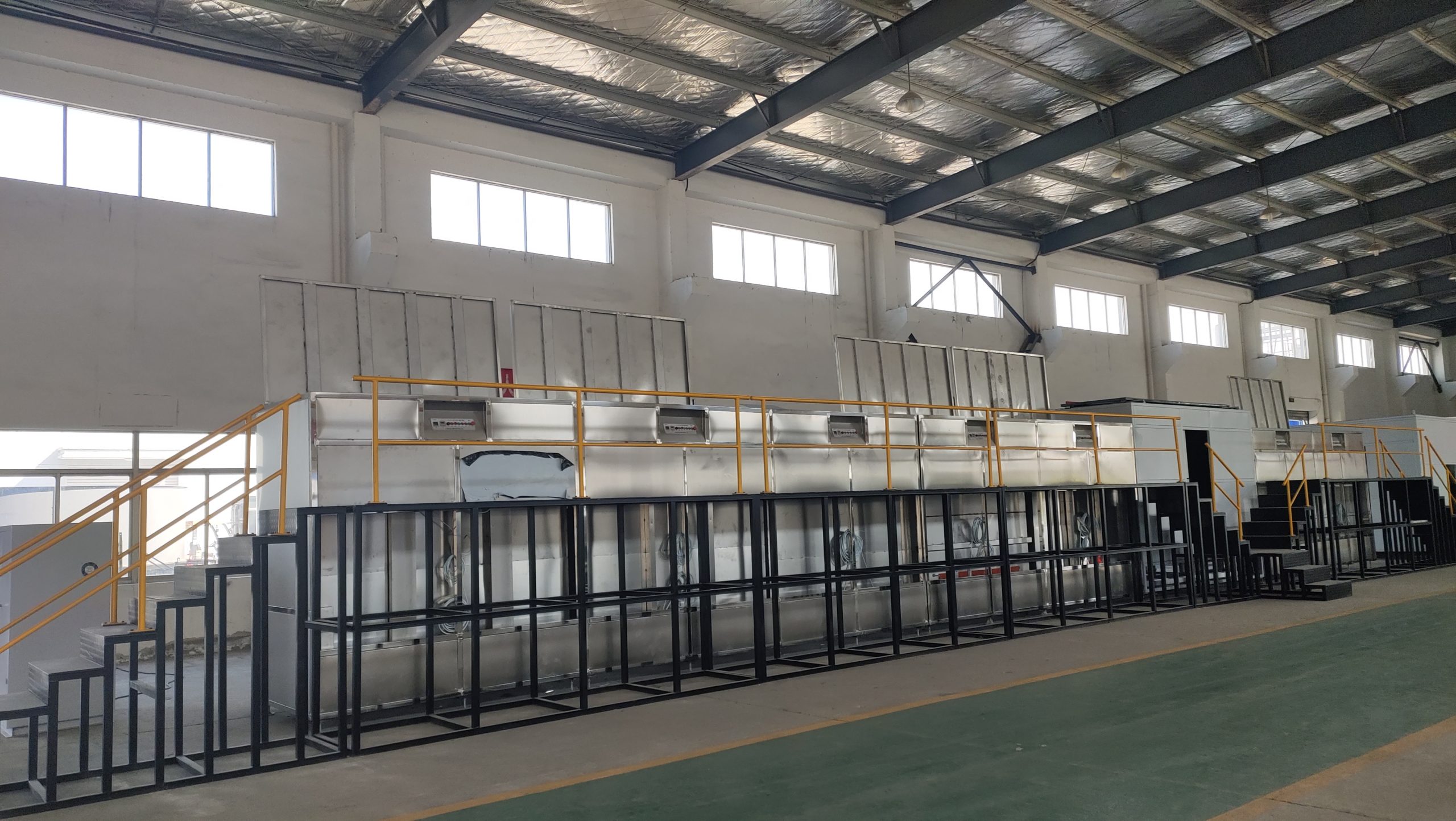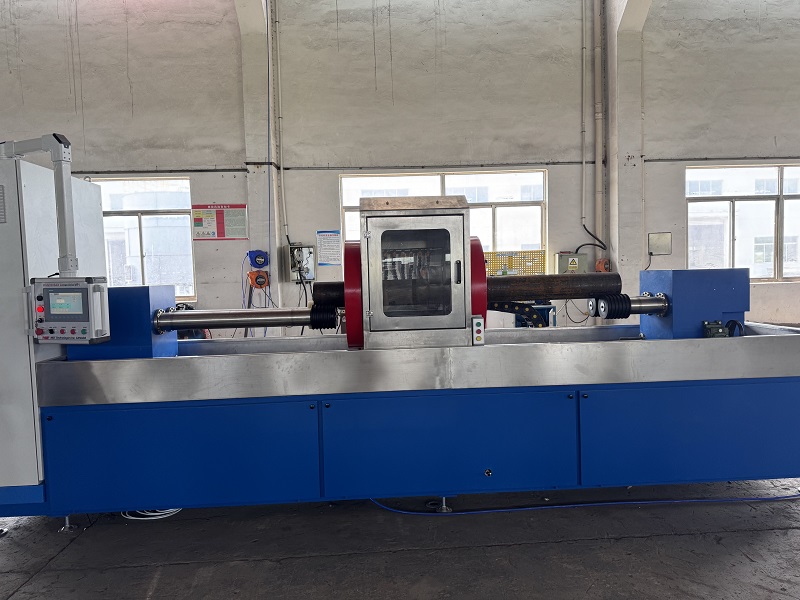In the realm of non-destructive testing (NDT), penetrant testing (PT) is a widely used method for detecting surface-breaking defects in metal or non-metal materials. Penetrant testing lines, as specialized equipment for this process, can be categorized into full-automatic penetrant testing lines and semi-automatic penetrant testing lines based on their level of automation.
1. What is a Penetrant Testing Line?
A penetrant testing line is a system designed to perform penetrant testing by applying penetrant, cleaning, and developer agents to a workpiece surface to detect defects. These systems are critical in industries such as aerospace, automotive, railway, and energy, ensuring component quality and safety.
Depending on the degree of automation, penetrant testing lines are divided into full-automatic and semi-automatic types. Below, we compare their technical features, operational processes, efficiency, costs, and applications.
2. Core Differences Between Full-Automatic and Semi-Automatic Penetrant Testing Lines
2.1. Level of Automation
– Full-Automatic Penetrant Testing Line: The entire process is controlled by automated systems, including workpiece transfer, penetrant application, cleaning, developer application, drying, and inspection. Minimal to no human intervention is required, with operations managed by robotic arms, conveyors, and PLC control systems.
– Semi-Automatic Penetrant Testing Line: Some steps require manual operation or monitoring. For instance, loading/unloading workpieces or applying penetrant may involve human effort, while other stages (e.g., drying or developer application) may be automated.
2.2. Operational Process
Full-Automatic Penetrant Testing Line:
– Workpieces are automatically fed into the system via conveyors or robotic arms.
– The system executes pre-programmed steps: penetrant application, cleaning, developer application, drying, and inspection.
– Results can be analyzed using automated optical inspection (AOI) systems or CCD cameras, with data stored digitally.
– Ideal for high-throughput, standardized production environments.
Semi-Automatic Penetrant Testing Line:
– Workpieces often require manual loading/unloading or positioning.
– Certain steps, like penetrant application or cleaning, may involve manual operation or equipment control.
– Inspection typically relies on human visual checks or basic tools.
– Suited for small to medium batches or non-standard workpieces.
2.3. Efficiency and Production Capacity
– Full-Automatic Penetrant Testing Line: High efficiency, ideal for large-scale production. Automation enables rapid testing (often within minutes per cycle) and supports 24/7 operation, making it suitable for high-volume industries like automotive or aerospace component manufacturing.
– Semi-Automatic Penetrant Testing Line: Lower efficiency due to manual operations, which limit testing speed. Best for small to medium batches or complex workpieces, with longer cycle times.
2.4. Accuracy and Consistency
– Full-Automatic Penetrant Testing Line: Precise control of parameters (e.g., penetrant volume, cleaning time) ensures high consistency and minimizes human error, resulting in reliable outcomes.
– Semi-Automatic Penetrant Testing Line: Quality may vary depending on operator skill, as manual steps can introduce inconsistencies, potentially affecting result reliability.
2.5. Cost Considerations
– Full-Automatic Penetrant Testing Line: High initial investment due to equipment, installation, and maintenance costs. However, long-term costs are lower due to reduced labor needs and high efficiency.
– Semi-Automatic Penetrant Testing Line: Lower upfront costs, making it suitable for businesses with limited budgets. However, higher labor costs and lower efficiency may impact long-term profitability.
2.6. Flexibility
– Full-Automatic Penetrant Testing Line: Less flexible, often tailored for specific workpieces or processes. Adapting to different workpieces may require reprogramming or equipment modifications.
– Semi-Automatic Penetrant Testing Line: Highly flexible, as manual operations allow easier adaptation to varied workpiece types or sizes, ideal for diverse production needs.
3. Pros and Cons Comparison
Full-Automatic Penetrant Testing Line
Pros:
– High Efficiency: Ideal for large-scale production with fast testing cycles.
– High Consistency: Automated controls ensure stable parameters and reliable results.
– Low Labor Costs: Minimal human intervention reduces long-term operational costs.
– Data Integration: Easily integrates with data collection systems for quality traceability.
Cons:
– High Initial Cost: Significant investment in equipment and setup.
– Low Flexibility: Less adaptable to non-standard workpieces.
– Complex Maintenance: Requires specialized technicians for upkeep.
Semi-Automatic Penetrant Testing Line
Pros:
– Low Initial Cost: Affordable equipment, ideal for small to medium enterprises.
– High Flexibility: Easily adapts to various workpiece types and testing needs.
– Ease of Operation: Lower technical requirements for operators.
Cons:
– Lower Efficiency: Manual operations slow down the process.
– Inconsistent Results: Human involvement may lead to variability in outcomes.
– Higher Labor Costs: Requires more manpower, increasing long-term costs.
4. Application Scenarios
Full-Automatic Penetrant Testing Line
– High-Volume Production: Ideal for industries like automotive parts, aerospace components, or railway manufacturing with large-scale testing needs.
– Standardized Workpieces: Best for uniform shapes and sizes, such as bolts or turbine blades.
– High Precision Requirements: Suited for applications demanding consistent and reliable results.
– Integrated Production: Works well in environments requiring integration with MES (Manufacturing Execution Systems) or other automated lines.
Semi-Automatic Penetrant Testing Line
– Small to Medium Batches: Suitable for mold manufacturing, ship repair, or single-piece production.
– Complex Workpieces: Ideal for irregular or non-standard components.
– Budget Constraints: Perfect for businesses with limited capital for equipment investment.
– Flexible Needs: Fits scenarios requiring frequent changes in workpiece types or testing processes.
5. How to Choose the Right Penetrant Testing Line?
Selecting between full-automatic and semi-automatic penetrant testing lines depends on several factors:
1. Production Scale: Choose full-automatic for high-volume production and semi-automatic for smaller batches.
2. Budget: Opt for semi-automatic if initial costs are a concern, with the potential to upgrade later.
3. Workpiece Characteristics: Semi-automatic is better for complex or non-standard parts, while full-automatic suits standardized components.
4. Quality Requirements: Full-automatic is preferable for high precision and consistency needs.
5. Long-Term Goals: Consider scalability and future automation needs for long-term efficiency.
7. Conclusion
Full-automatic and semi-automatic penetrant testing lines cater to distinct needs in the NDT industry. Full-automatic lines excel in efficiency, consistency, and low labor costs, making them ideal for high-volume, standardized production. In contrast, semi-automatic lines offer affordability and flexibility, perfect for smaller batches or complex workpieces. Businesses should evaluate their production scale, budget, workpiece types, and quality requirements to make an informed choice.
For further details or customized solutions for penetrant testing equipment, contact us to consult a professional equipment supplier.










